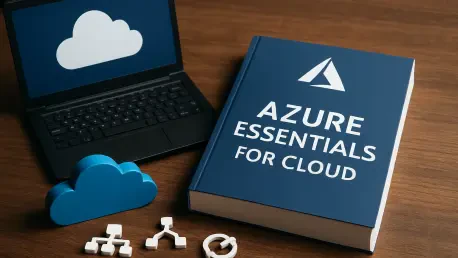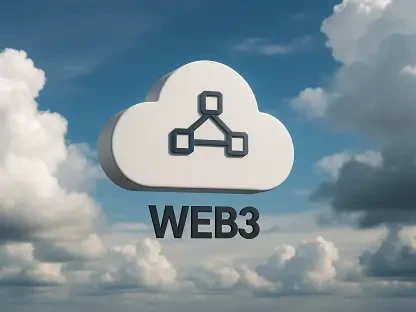Welcome to an insightful conversation with Maryanne Baines, a renowned authority in cloud technology with extensive experience evaluating cloud providers, their tech stacks, and applications across various industries. Today, we dive into the world of Microsoft Azure, exploring how Azure Essentials empowers organizations to navigate their cloud and AI journeys with confidence. In this interview, we’ll touch on the foundational tools and frameworks that help IT teams build robust solutions, the strategies for designing secure and scalable architectures, and the importance of long-term optimization for sustained success. Let’s get started with Maryanne’s expert perspective on how Azure Essentials is shaping the future of digital transformation.
How would you describe Azure Essentials, and what role does it play in helping organizations embark on their cloud and AI journeys?
Azure Essentials is a comprehensive suite of guidance, tools, and resources developed by Microsoft to support organizations at every stage of their cloud and AI adoption. It’s designed to help IT teams build solutions that are secure, scalable, and aligned with business goals. Whether a company is migrating to the cloud, modernizing applications, or creating AI-driven apps, Azure Essentials provides tailored frameworks and best practices based on real-world customer experiences. It acts as a roadmap, ensuring teams can innovate quickly while maintaining reliability and security, ultimately maximizing the value of their cloud investments.
What are some of the biggest hurdles IT teams face in today’s fast-paced environment, and how does Azure Essentials help overcome them?
IT teams are under immense pressure to deliver platforms that are not only technically robust but also deliver measurable business outcomes like strong ROI on AI initiatives. Challenges include managing complex migrations, ensuring security in dynamic environments, and keeping up with rapidly evolving technologies. Azure Essentials addresses these by offering proven methodologies and tools that streamline planning and execution. It helps balance technical requirements with business needs by providing resources like cost optimization practices and governance frameworks, ensuring IT teams can innovate without compromising on stability or efficiency.
Can you walk us through how the Microsoft Cloud Adoption Framework within Azure Essentials supports IT teams in laying the groundwork for cloud projects?
The Microsoft Cloud Adoption Framework, or CAF, is a cornerstone of Azure Essentials. It provides structured guidance to help teams prepare environments that are secure, well-governed, and optimized from the start. CAF’s methodology, particularly the “Ready” phase, focuses on setting up Azure landing zones with built-in security and operational controls. It integrates with tools like Azure Migrate and Azure Blueprints to ensure seamless planning and delivery. Essentially, CAF helps IT teams avoid common pitfalls by offering a clear path to building resilient foundations for their cloud projects.
How do prebuilt resources like Azure landing zones and reference architectures in Azure Essentials save time and reduce complexity for IT professionals?
Prebuilt Azure landing zones and reference architectures are game-changers for IT teams. Landing zones are hardened, ready-to-use environments aligned with CAF that come with preset identity, network, and compliance baselines. This means teams can deploy workloads faster without starting from scratch. Similarly, reference architectures—covering scenarios like OpenAI deployments or Retrieval-Augmented Generation—provide tested, repeatable patterns for common use cases. These resources cut down on engineering overhead, reduce errors, and let teams focus on innovation rather than reinventing the wheel.
Security is a top concern for many organizations. How does Azure Essentials incorporate practices like Zero Trust to enhance project security from the outset?
Azure Essentials embeds Zero Trust principles into its guidance, ensuring security is a priority from the planning stage. Zero Trust focuses on continuous verification, limiting access, and enhancing visibility across environments. By integrating these best practices early, teams can strengthen both security and operational resilience throughout the project lifecycle. Azure Essentials also supports tools like Defender for Cloud and Key Vault, which help protect builds at every layer, making sure that security isn’t an afterthought but a fundamental part of the design.
Beyond tools, how does Azure Essentials support the human side of cloud transformation through training and skill-building?
Cloud transformation isn’t just about technology—it’s about empowering people. Azure Essentials offers a range of upskilling opportunities, including training programs, sandbox environments, and planning tools. These resources help IT professionals build fluency in cloud concepts and stay updated on the latest features. By investing in skill development, Azure Essentials ensures that teams aren’t just equipped with tools but also with the knowledge to use them effectively, fostering confidence and driving successful outcomes.
Designing a strong cloud architecture comes with its own set of challenges. How does the Well-Architected Framework in Azure Essentials help ensure reliability and security during deployment?
The Well-Architected Framework, or WAF, is a powerful tool within Azure Essentials that helps teams design solutions with reliability, security, and operational efficiency in mind. It provides a set of principles and reviews to assess designs against key metrics like uptime and recovery targets before going live. WAF encourages teams to encode best practices into their architectures, addressing potential trade-offs early. This proactive approach minimizes risks and ensures that deployments are robust and ready to handle real-world demands.
Can you explain the concept of chaos engineering and how Azure Essentials uses it to validate system resilience?
Chaos engineering is a method of intentionally introducing failures into a system to test its resilience and recovery capabilities. Within Azure Essentials, tools like Azure Chaos Studio allow teams to simulate disruptions and observe how their systems respond. This practice helps validate self-healing and failover mechanisms before production, ensuring that solutions can withstand unexpected issues. By incorporating chaos engineering, Azure Essentials enables IT teams to build confidence in their systems’ ability to maintain uptime and reliability under stress.
Governance is critical for long-term success. How does the governance guidance in Azure Essentials help architects design efficient and compliant solutions?
Governance guidance in Azure Essentials provides architects with frameworks, checklists, and tools to design solutions that mitigate risks and align with organizational needs. It covers a wide range of topics, including regulatory compliance, identity management, security, cost optimization, and AI operations. This guidance ensures that solutions aren’t just technically sound but also adhere to policies and standards, preventing issues like configuration drift. It’s about building systems that are efficient, secure, and adaptable as business needs evolve.
Looking beyond deployment, why is ongoing maintenance and optimization so important, and how does Azure Essentials support this phase?
Post-deployment maintenance and optimization are crucial because cloud environments are dynamic—workloads change, new threats emerge, and business goals shift. Azure Essentials supports this phase with tools like Azure Monitor for observability, workload optimization resources, and centralized AI governance through platforms like Azure AI Management Center. These help teams proactively identify issues, sustain performance, and ensure security and compliance over time. It’s about continuous improvement to keep systems aligned with both IT and business objectives.
What’s your forecast for the future of cloud and AI adoption, and how do you see Azure Essentials evolving to meet emerging needs?
I believe cloud and AI adoption will continue to accelerate as organizations seek to stay competitive in an increasingly digital world. We’ll see greater integration of AI into everyday operations, with a stronger focus on governance, security, and cost efficiency. Azure Essentials is well-positioned to evolve by expanding its frameworks and tools to address emerging technologies and challenges, such as advanced AI workloads or hybrid environments. I expect it to remain a critical resource, offering even more tailored guidance and automation to help teams navigate complexity with confidence.









